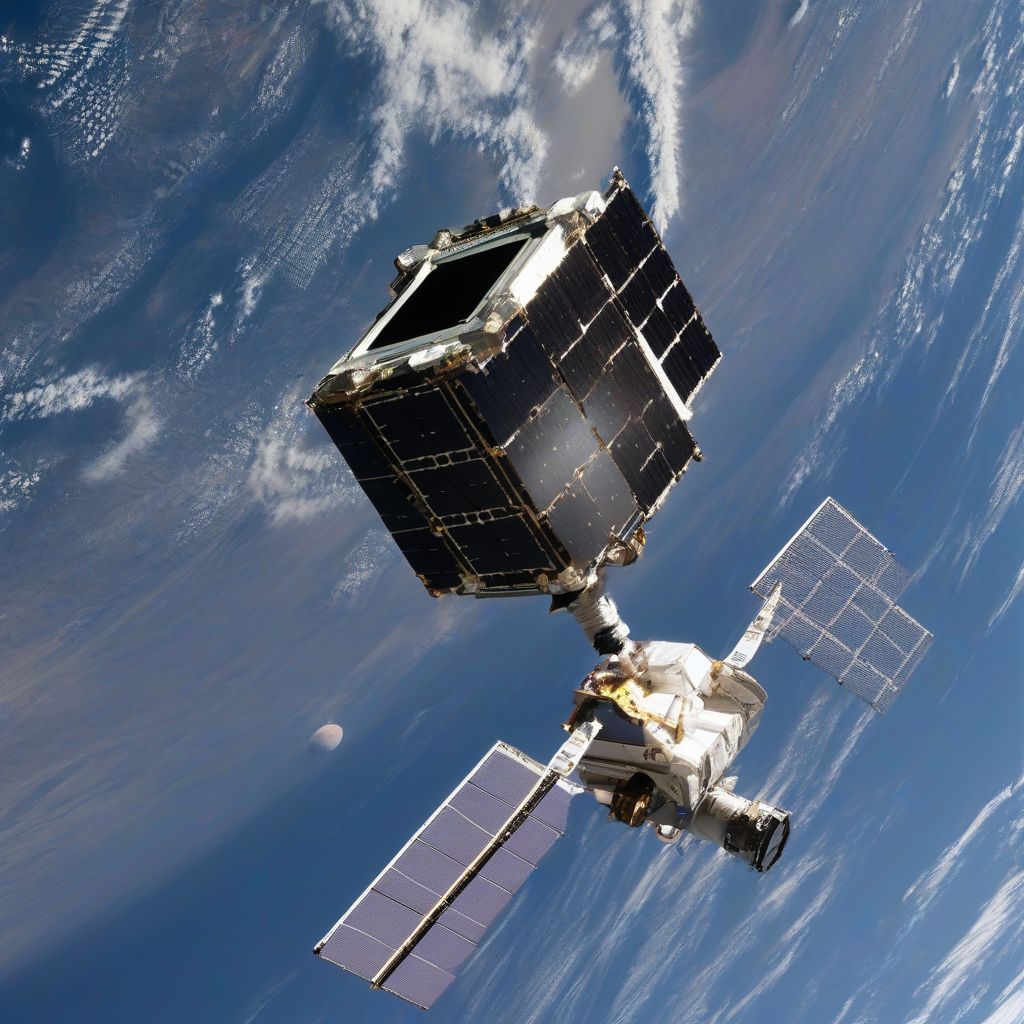Imagine a satellite the size of a loaf of bread orbiting Earth, collecting valuable data, and costing a fraction of traditional spacecraft. This isn’t science fiction; it’s the reality of CubeSats, and they’re transforming how we explore space and utilize satellite technology. From monitoring our planet’s health to pushing the boundaries of interplanetary travel, these miniature marvels are making a big impact.
The Rise of the Tiny Titans: What are CubeSats?
CubeSats are miniaturized satellites based on a standardized 10x10x10 cm cube (1U). They can be combined to create larger configurations like 3U, 6U, or even 12U, offering increased capabilities. Their small size and standardized design dramatically reduce development costs and lead times, opening the door for more frequent launches and wider participation in space exploration.
Democratizing Space: Accessibility and Affordability
Historically, access to space was limited to government agencies and large corporations due to the prohibitive costs. CubeSats have changed the game, making space exploration accessible to universities, smaller companies, and even individual researchers. This democratization has fostered innovation and accelerated the development of new technologies. “The low barrier to entry allows students to gain hands-on experience, fostering the next generation of space engineers,” says Dr. Emily Carter, a leading aerospace engineer (fictional quote).
Rapid Development Cycles: From Concept to Orbit in Months
Unlike traditional satellites that can take years to develop, CubeSats can be built and launched in a fraction of the time. This agility enables faster iteration, experimentation with new technologies, and quicker responses to emerging needs, such as disaster monitoring.
Revolutionizing Scientific Discovery: Diverse Applications of CubeSats
The versatility of CubeSats makes them suitable for a wide range of missions, contributing to advancements in various scientific fields.
Earth Observation: Monitoring Our Planet’s Vital Signs
CubeSats equipped with specialized sensors provide valuable data on weather patterns, climate change, deforestation, and agricultural productivity. This information empowers researchers and policymakers to make informed decisions about environmental management and resource allocation.
Space Science: Exploring the Universe on a Budget
These tiny satellites can also perform complex scientific investigations in space, studying the Earth’s magnetosphere, solar flares, and even venturing into deep space. For instance, the MarCO CubeSats demonstrated the feasibility of interplanetary communication during the InSight Mars landing.
Technology Demonstrations: Testing New Concepts in Orbit
CubeSats provide a cost-effective platform for testing new technologies in a real-world environment. This allows researchers to validate innovative designs and concepts before implementing them in larger, more expensive missions.
Challenges and Future Directions
While CubeSats offer numerous advantages, they also face limitations in terms of power, data storage, and computational capabilities. However, ongoing advancements are addressing these challenges. For example, improved battery technologies are extending mission lifetimes, while miniaturized instruments are increasing scientific payload capacity.
Constellations and Swarms: The Power of Many
The future of CubeSats lies in the deployment of constellations, networks of interconnected satellites working together to achieve greater coverage and resilience. These constellations can provide continuous global monitoring for various applications, such as Earth observation and communication.
Beyond Earth Orbit: Exploring Deep Space
CubeSats are not confined to Earth’s orbit. They are increasingly being considered for missions to the Moon, Mars, and beyond. These missions can serve as precursors to larger spacecraft, scouting landing sites and collecting preliminary data. “CubeSats are poised to become an integral part of future deep-space exploration,” predicts Dr. Alex Rodriguez, a planetary scientist (fictional quote).
Conclusion
CubeSats have undoubtedly revolutionized satellite missions, democratizing access to space and enabling scientific advancements across various disciplines. Their affordability, rapid development cycles, and versatility make them a powerful tool for exploring our planet, understanding the universe, and pushing the boundaries of space technology. From monitoring Earth’s delicate ecosystems to venturing into the vastness of space, these tiny titans are making a big impact, and their potential is only beginning to be realized. We encourage you to share your thoughts on the future of CubeSats in the comments below!
 CubeSat Deployment from ISS
CubeSat Deployment from ISS



